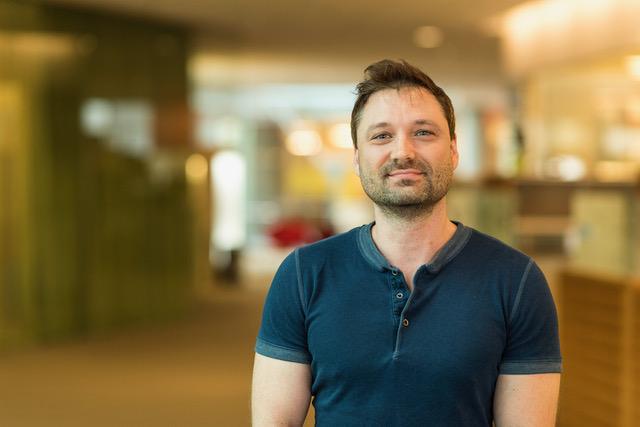A regenerative biology team working at the Morgridge Institute for Research at University of Wisconsin was developing artificial methods to grow arterial endothelial cells in a lab when they made an unexpected discovery regarding stem cell research.
Their finding holds the potential to have widespread impact on how heart disease is understood.
Morgridge Institute fellow Dave Vereide is the leader of the research team responsible for the finding. But this isn’t Vereide’s first time making a breakthrough in the scientific community. He has done numerous projects for UW scientific research in the past, ranging from work on blood development to studying lymphoma cells that harbor the Epstein-Barr virus.
“As a postdoc/scientist with Jamie Thomson [in blood development], I identified six transcription factors that together induce and expand progenitors of blood and vascular tissues in culture,” Vereide said.
His other discoveries include the identification of a mechanism by which the Epstein-Barr virus sustains tumor cells. Vereide’s extensive background and level of expertise in the area of regenerative biology both make him a fitting leader of the research team behind this latest breakthrough.
UW scientists research role of gene-editing in curing inherited diseases
According to the Centers for Disease Control and Prevention, heart disease is the leading cause of death among Americans. About one in four people in the US die of it annually. It is an illness scientists have been struggling to gain a better understanding of for a long time.
“We certainly are pretty excited about our findings and think they could prove to be useful,” Vereide said.
Vereide’s team found a way to cultivate human arterial precursor cells in a dish when they realized the precursor cells they were generating appeared to mimic a step that occurs in cells in the early stages of heart disease.
As someone develops cardiovascular disease, some of their arterial endothelial cells change, Vereide said. They become mesenchymal cells, which act differently than endothelial cells. Endothelial cells are considered to be a “normal” cell type.
“[Mesenchymal cells] can pile up on themselves, narrowing the artery so it is difficult for blood to flow through,” Vereide said. “Mesenchymal cells can also deposit calcium, hardening the artery.”
Endothelial-to-mesenchymal transition is the name given to the process that cells go through when they change from an endothelial to a mesenchymal state. Some of the precursor cells generated by the research team underwent an EndoMT easily, while other cells resisted the change.
Using this new knowledge, the team plans to analyze the genetics of both mesenchymal and endothelial cells with the hopes of finding genes that explain what leads some endothelial cells to undergo the transition to mesenchymal ones more easily than others.
“These differences [between the two cell types] fortuitously give us a new model for human cardiovascular disease,” Vereide said.
Three UW alumni recognized for contribution in STEM field at high schools
According to the Mayo Clinic, the best method for both the prevention and treatment of heart disease is lifestyle choices like not smoking, eating healthy and staying active. For those with a genetic predisposition to the disease, the Morgridge Institute discovery could prove to be especially beneficial.
Another idea Vereide and his team have involves using the precursor cells that transition to mesenchymal ones more easily as screens for smaller molecules. The thought is that doing so would greatly restrict their ability to become mesenchymal.
“You could imagine that the small molecules that come out of those screens might one day be developed into drugs to limit the progression of atherosclerosis,” Vereide said.
Being able to develop drugs that would slow the progression of heart disease would be a major breakthrough in the medical community, though an innovation of that magnitude is still a long way from happening. The true impact of the finding won’t really be determined for another five to 10 years, Vereide said.
As for the immediate future, the team has two distinct goals.
The first is to look more closely at the genetics of EndoMT cells and the second is to polish the cultivation of cells.
“Right now, we have to genetically engineer the cells with two transcription factors to get them to grow in a dish,” Vereide said. “We want to replace the factors with small molecules and/or growth factors.”
UW scientists develop brain-like structure to improve drug safety testing
Replacing the transcription factors of the cells would eliminate the team having to genetically manipulate them and give the cells greater potential to someday be used in cell-based therapy, Vereide said.
He said the ultimate goal of all the people who make up the regenerative biology research group is to improve human health. Vereide believes their most recent discovery has the potential to achieve that ultimate goal and is optimistic about the future.
“Stay tuned, and we’ll see what comes out of it,” Vereide said.




















